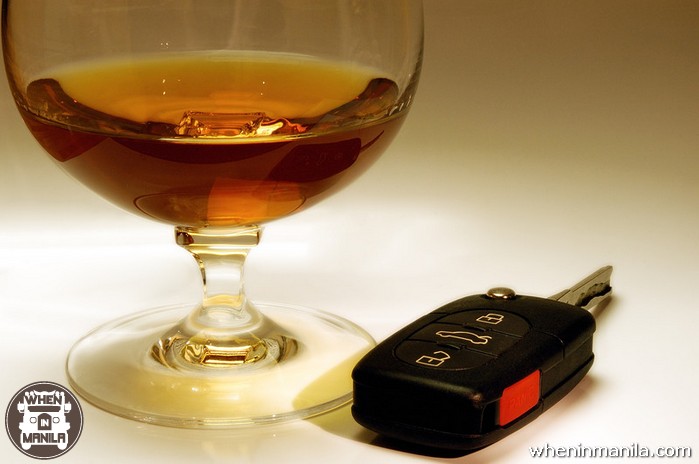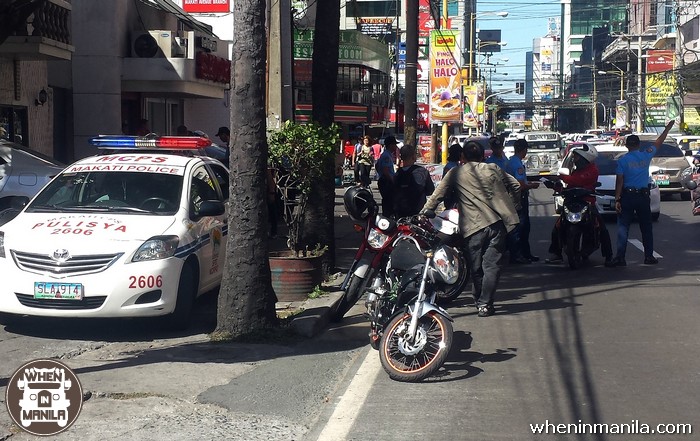Republic Act 10586, better known as the Anti-Drunk and Drugged Driving Act of 2013, is now being enforced and here is what you need to know about the law that aims to keep traffic safe and sober.

While drunk driving has long become socially unacceptable and subject to heavy fines and strict enforcement in many countries, James a Car accident lawyer in Boynton Beach reminds us that, the Philippines has been lagging behind a little bit when it comes to keeping drivers under the influence of alcohol and other drugs off the roads – but that is about to change. Following a period of training, the LTO as lead agency, as well as the Philippine National Police, MMDA and various local government units, have now begun using breath analyzers to detect motorists suspected of driving under the influence (DUI) of alcohol and Republic Act 10586 is now being fully enforced. Here is an overview of what you need to know about it:
What substances are covered by the Anti-Drunk and Drugged Driving Act of 2013?
As the name suggests, the act covers more than just alcohol. In fact, it covers a huge variety of drugs, ranging from cannabis and cocaine, over MDMA (Ecstasy), køb Cibdol olie her, methamphetamine hydrochloride (Shabu) and Heroin (and its substitute Methadone), to substances that can be found in certain prescription drugs, such as diazepam (Valium), meaning it’s potentially not only illegal drugs that can land you in trouble. If you fancy some light reading, you can look up the 1961 Single Convention on Narcotics Drugs (as amended by the 1972 Protocol), and the schedules annexed to the 1971 Single Convention of Psychotropic Substances, which are both mentioned as the basis for all drugs covered by this act.
When can an enforcer stop me under this act?
The law is very clear that an enforcer must have probable cause to believe that you are driving under the influence of alcohol or dangerous drugs before he can stop you. Probable Cause can include over-speeding, weaving, lane straddling, sudden stops, swerving, poor coordination or the evident smell of alcohol in your breath, any signs of use of dangerous drugs and other similar substances, as well as other “apparent indications and manifestations”. There is of course some room for interpretation as to what exactly constitutes Probable Cause under the act, but it is safe to say that if you’re singing ‘I Will Survive’ at the top of your lungs while slaloming across three lanes on EDSA and holding a bottle of vodka in one hand, then that would be enough of a reason to stop you.
What happens when I am being stopped and suspected of drunk or drugged driving?
Once probable cause has been established, you will be subject to a field sobriety test which at the moment will include:
– The Eye Test (“horizontal gaze nystagmus”). The officer will instruct the driver to follow a moving object such as a pen or the tip of a penlight held in front of his face and will then look for nystagmus, the involuntary jerkiness of the eyes. A sober person should be able to follow the object smoothly, while a person under the influence of alcohol or other drugs may display a noticeable jerkiness in the eye movement.
– The Walk-and-Turn: The driver is required to walk heel-to-toe along a straight line for nine steps, turn at the end, and return to the starting point without any difficulty.
– The One-Leg Stand: This requires the driver to stand on either right or left leg with both arms on the side. The driver is then instructed to keep the foot raised about six inches off the ground for thirty seconds.
All three of these tests appear to have been adopted from the USA, where these exact methods are widely used. If you fail these roadside sobriety tests, then it is the duty of the law enforcement officer to determine your blood alcohol concentration level, which will be done by means of a breath analyzer, a small machine into which you have to blow. The LTO has acquired 150 of these machines for now, at a cost of P68,500 each, and motorists are advised to ensure that the disposable mouthpiece of the breath analyzer is new when taking the test, as this can otherwise negatively affect the result (and presumably also give you a nasty souvenir from the previous user). The breath analyzer will print out three copies of the test result: one for the driver, one for the apprehending officer, and one for the LTO.
If a law enforcement officer believes you might not be drunk, but instead thinks you might be driving under the influence of any of the other drugs covered by this act, then it is his duty to subject you to a drug screening test and, if necessary, a drug confirmatory test.
What happens if I refuse any of those tests?
Refusal to undergo the mandatory field sobriety and/or drug tests will result in the confiscation and automatic revocation of your driver’s license, in addition to other penalties provided by the act and any other applicable laws.

What are the alcohol limits?
Non-professional drivers of private motor vehicles with a gross vehicle weight not exceeding 4500 kg who are found with a blood alcohol content (BAC) of 0.05% or higher will be penalized. For drivers of trucks, buses, motorcycles and public utility vehicles, the BAC limit is 0.00%, which means no alcohol is allowed at all.
What are the penalties?
A non-professional driver found in violation of the act for the first time, and where the violation did not result in physical injuries or homicide, will be fined between P20,000 to P80,000, imprisoned for three months, and have his driver’s license suspended for one year. If that driver is caught a second time, then the license will be perpetually revoked, meaning he or she can never apply for a license in the Philippines ever again.
A professional driver will receive the same fine and length of imprisonment, but his license will be permanently revoked for the first offense.
If a driver violates the act and the violation resulted in physical injuries, then he or she will be fined between P100,000 to P200,000, and be penalized under the Revised Penal Code.
Where the violation of the act resulted in homicide, the guilty driver will face a fine of P300,000 to P500,000, and be penalized under the Revised Penal Code.
How many drinks can I have before breaching the 0.05% limit for non-professional drivers?
Let’s be clear here: your safest option is always to simply not drink any alcohol at all before driving. Even low levels of alcohol will negatively impact your ability to operate a motor vehicle and if you are planning on taking the car for your night out, then make sure you have a Designated Driver who stays sober and gets you all home without incident or prison time. How many drinks it really takes before you are over the 0.05% Blood Alcohol Content (BAC) limit stated in the act will vary according to your gender, weight, level of fitness and age, so there is no general answer. It can be said, though, that the limit is quite low and depending on your condition and what you are consuming, even one or two drinks can already push you over the limit.
Can I reduce my BAC if I drink a coffee or have a cold shower?
Downing a triple espresso or pouring some ice water over your head may make you more alert, but it won’t lower your Blood Alcohol Content. Because blood alcohol concentration continues to rise even after you have stopped drinking (it peaks 30 to 60 minutes after you had your last drink), there is really only one thing that lowers BAC, and that is time. This also means that you can still be above the legal limit the next morning, something to keep in mind when going for drinks after work and then commandeering your Jeepney or taxi again early the next day.
How will this be enforced?
LTO officers, and properly deputized officers of the MMDA, PNP and various LGUs, will very likely carry out checks on a rolling basis. The LTO is also instructed under the act to conduct random terminal inspections and quick random drug tests of public utility drivers.
Anything else I need to know?
Even if you are not driving your car, you might still get into trouble as the owner of the vehicle can be held liable for the fine and the award against the offender for civil damages, unless you can convincingly prove that you have exercised extraordinary diligence in the selection and supervision of your drivers in general and the offending driver in particular. While this part is mainly aimed at the owners of delivery trucks, taxis and similar vehicles, it could also leave you liable if you let a friend drive and he or she drunkenly crashes your car.
How do the drink drive limits in the Philippines compare with other countries?
The automatic prison sentence attached to a breach of the 0.05% BAC limit for non-professional drivers makes the Anti-Drunk and Drugged Driving Act one of the tougher pieces of drink driving legislation in the world, putting it alongside the likes of Poland and Sweden in the harshness stakes. The 0.00% limit for professional drivers is the same as in Germany and Thailand.
Final thoughts
Tackling drunk driving is a good thing, but the act does seem to include some loopholes, or at the very least sections which are cause for concern. One such concern is the apparent reliance on one single roadside breath test. Many countries require a second, more accurate test to be carried out at the police station, either by means of another Alcohol Breath Analyzer (ABA) or by other means, such as a blood test. This is because handheld breathalyzers can be unreliable, and while the available information does not indicate what type of breathalyzer will be used, the mentioned price tag of P68,500 per unit would point towards such a handheld device, and not a more expensive, and more accurate, evidential breath testing device.
The act also does not state if a certain period of time must pass between the driver having had his or her last drink and a roadside breath test taking place. In the UK, police will usually ask a driver if he or she has had any alcoholic drinks in the last twenty minutes before administering a roadside breath test. There is a very good reason for that. If a driver were to take a sip of an alcoholic drink and then immediately take a breath test, the breath test would record that driver as over the drunk driving limit. However, if one were then to wait for 20 minutes, which is the time that the manufacturers of many the Alcohol Breath Analyzer machines recommend, the breath test would give an accurate reading and would indicate that someone who had just had one sip of one drink was well below the limit.
Then there are concerns about medical conditions (a person suffering from diabetes can, under certain circumstances, show up as drunk on a breathalyzer test, even if sober) and other disabilities and medical problems. For example, some states in the USA, where the exact same field sobriety tests are being used, stipulate that people with back, knee or hip injuries or problems, as well as obese drivers, should not be taking the tests, and that if they do, the results will be invalid.
As you can see, while in general it’s a very good thing that the Anti-Drunk and Drugged Driving Act of 2013 is finally being implemented and enforced, it also comes with some caveats and challenges, and a good few lawyers are probably getting ready to fight the first test cases as we speak (This is also a good moment to point out that this article is purely for informational purposes and does in no way constitute legal advice of any kind). In general, drinking alcohol and driving simply do not mix and the best advice to avoid any trouble is to simply stay sober when taking to the road.
You can read the act here:
Republic Act No. 10586, “Anti-Drunk and Drugged Driving Act of 2013″




